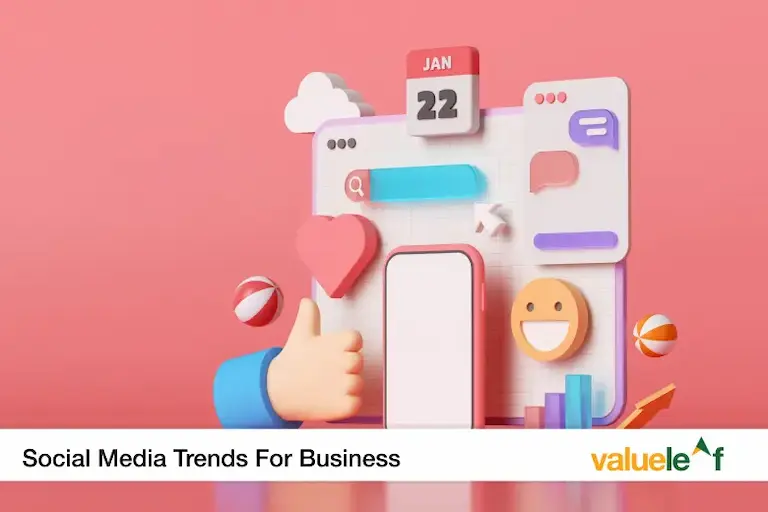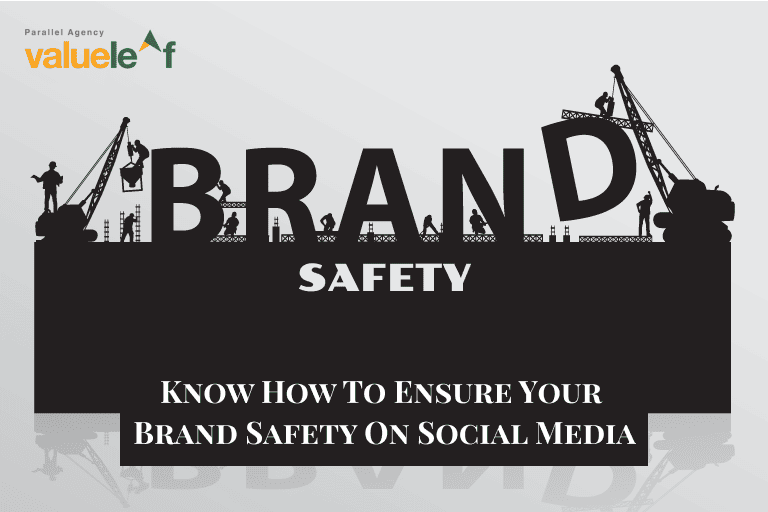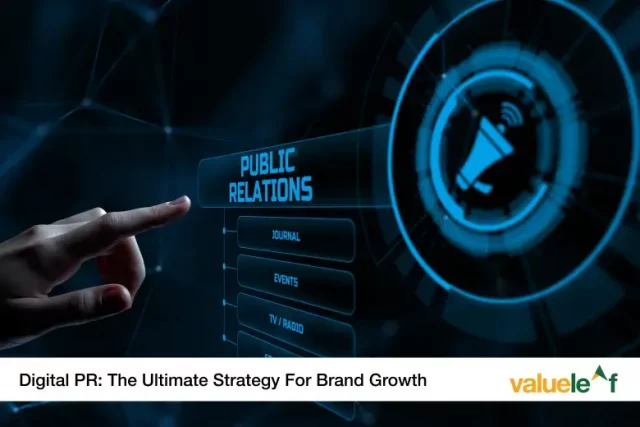With over 5.17 billion active users projected globally, social media is the heartbeat of digital business. With over 5 billion active users globally, businesses must rethink their social media strategies to drive engagement, build trust, and boost revenue.
This blog will walk you through proven strategies, future trends, and actionable tips to master social media marketing in 2025 and beyond, ensuring your business stays ahead in a dynamic, digital-first world.
| Social media’s influence is exploding—5.17 billion users by 2025, $2.9 trillion social commerce market, and 82% of internet traffic from video. Brands with active profiles earn 72% more trust, while AI will drive 45% of interactions.
Micro-influencers and customer service through Messenger, Instagram, and WhatsApp will dominate growth. |
Top 6 Social Media Trends to Watch in 2025
In 2025, social media isn’t just a marketing tool—it’s a business essential. To stay competitive, brands must understand why social media matters more than ever and keep pace with the trends that are shaping their future.
- AI-driven content creation
In 2025, smart automation will be the key to scaling content without compromising quality or personalization.
| Canva has taken a major leap by integrating a coding feature, enabling creators to generate and customize widgets, apps, and interactive visuals directly within the design platform. |
- Social commerce boom
Social media is rapidly becoming a digital storefront. With features like live shopping, shoppable posts, and one-click checkout, platforms are streamlining the purchase journey. - Short-form videos rule
Short videos under 60 seconds—like Instagram Reels, TikTok clips, and YouTube Shorts—continue to dominate engagement. They’re snackable, shareable, and perfectly suited for consumers with shrinking attention spans. - Micro and Nano-influencers
Micro (10K–100K) and nano-influencers (under 10K) generate higher engagement rates, build niche communities, and offer better ROI for brands looking to create genuine connections. - Augmented Reality (AR) and Virtual Reality (VR) experiences
AR and VR are revolutionizing how customers interact with products and services. Whether it’s trying on virtual makeup or taking a 3D tour of a new product, these immersive technologies enhance user experience and significantly boost conversion rates. - Voice Search Optimization
As smart speakers and AI assistants gain traction, voice search queries are surging. Brands must adapt their content, especially on platforms like YouTube and Instagram, to be voice-friendly by using natural language, questions, and location-based keywords.
Top 4 Business-Oriented Social Media Post Types That Work Best
In a crowded digital landscape, businesses must go beyond promotions and focus on content that builds trust, educates, and connects. These four post types consistently drive the most engagement, conversions, and brand loyalty across platforms in 2025.
1. Educational & Value-Driven Content
Offer tips, tutorials, or industry insights to help your audience solve real problems. These posts position your brand as a trusted expert.
Example: “3 Proven Strategies to Cut Your Customer Acquisition Cost in 2025”
2. Customer Testimonials & Case Studies
Showcasing real results builds credibility and drives conversions. Use video or visuals for more impact.
Example: “How Our AI Tool Helped a Retail Brand Grow Sales by 47% in 3 Months”
3. Product Demos & Feature Highlights
Demonstrate what makes your product or service unique with quick, engaging visuals or explainer videos.
Example: “See Our New Automation Feature in Action – Save 10+ Hours/Week Instantly!”
4. Behind-the-Scenes & Team Culture
Humanize your brand by showing the people, process, and personality behind it. Builds connection and trust.
Example: Meet the Developers Behind Our Latest Feature – #TeamTuesday
Choosing the Right Platforms for Your Business
Choosing the right social media platform in 2025 is no longer about being everywhere—it’s about being where your audience is and matching your content style to the platform’s strengths. Here’s a detailed guide to help you align your business goals with the right social spaces:
Instagram remains a powerhouse for visual-first brands. Fashion, beauty, fitness, food, travel, and lifestyle businesses thrive here because the platform prioritizes aesthetic content, influencer partnerships, and highly shareable Stories and Reels.
Instagram also offers shopping tools (Instagram Shops) perfect for direct-to-consumer (D2C) brands.
LinkedIn is the ultimate platform for B2B companies, corporate branding, and professional service providers. Ideal for building thought leadership, networking with industry peers, recruiting talent, and showcasing company culture.
LinkedIn’s importance is only growing among business audiences.
YouTube
When it comes to long-form, evergreen content, YouTube reigns supreme. Brands that invest in tutorials, product demonstrations, how-to guides, and storytelling videos can build strong trust and authority.
It’s also the second-largest search engine after Google—making SEO optimization for YouTube videos a powerful strategy.
Although Facebook’s younger user base is shrinking, it remains essential for targeting older demographics (35+). It’s great for community building (Groups), customer service and event promotion.
Facebook is a highly targeted paid advertising due to its advanced ad tools.
Threads and Snapchat
Threads and Snapchat are great for quick, short updates and real-time content. They’re effective for reaching younger audiences like Gen Z and Gen Alpha, helping brands stay relevant and spark direct, casual conversations.
Choosing the Right Social Media Platform 2025
Use this guide to match your brand with the right platform based on your audience, content style, and business goals, because choosing the right social space is half the battle in building digital success in 2025.
| Platform | Best For | Primary Audience | Business Type It’s Best For |
| Fashion, Beauty, Food, Lifestyle Brands | Millennials, Gen Z | E-commerce, D2C, Personal Branding | |
| TikTok | Trends, Viral Marketing, Young Audiences | Gen Z, Younger Millennials | Fast-moving products, Entertainment, EdTech |
| B2B, Professional Services, Recruiting | Professionals, Executives | SaaS, Consulting, HR, Enterprise Solutions | |
| YouTube | Tutorials, Brand Storytelling | Broad (All Age Groups) | Education, Tech, Wellness, Consumer Goods |
| Community Building, Paid Ads | Adults 35+ | Local Businesses, NGOs, Services, Health | |
| Threads/Snapchat | Real-time Updates, Direct Engagement | Gen Z, Gen Alpha | Youth Fashion, Quick-Service Retail, Apps |
Conclusion
In 2025, social media is a must-have for business success. From AI-powered content to social commerce, staying ahead means adapting fast.
Know where your audience is, use smart tools, and share real value.
Whether you’re B2B or D2C, success lies in building trust, sparking conversation, and showing up consistently.
FAQs About Using Social Media for Business in 2025
Q. What is the best social media platform for my business in 2025?
A. It depends on your industry and audience. For B2B, LinkedIn is essential. For D2C or e-commerce brands, Instagram and TikTok perform best. YouTube works across most verticals, especially for tutorial-heavy products or services.
Q. How often should my business post on social media?
A. Post consistently, not constantly. For most platforms, 3–5 posts per week is ideal. Quality, value-driven content always outperforms frequency.
Q. Is it still worth investing in paid social media ads?
A. Absolutely. With organic reach declining, paid ads are essential for visibility, especially for retargeting campaigns and lead generation.
Q. What type of content performs best in 2025?
A. Short-form videos, educational posts, product demos, and behind-the-scenes content dominate engagement. Combine visuals with storytelling for best results.
Q. How do I measure ROI on social media?
A. Track engagement rate, click-throughs, conversions, follower growth, and customer sentiment. Use tools like Google Analytics, Meta Business Suite, and LinkedIn Analytics for detailed performance insights.
Q. Should I use AI to manage my social media?
A. Yes, AI tools like ChatGPT, Canva AI, and scheduling tools like Buffer or Later help save time and improve personalisation. Just make sure to retain a human touch in responses and storytelling.




